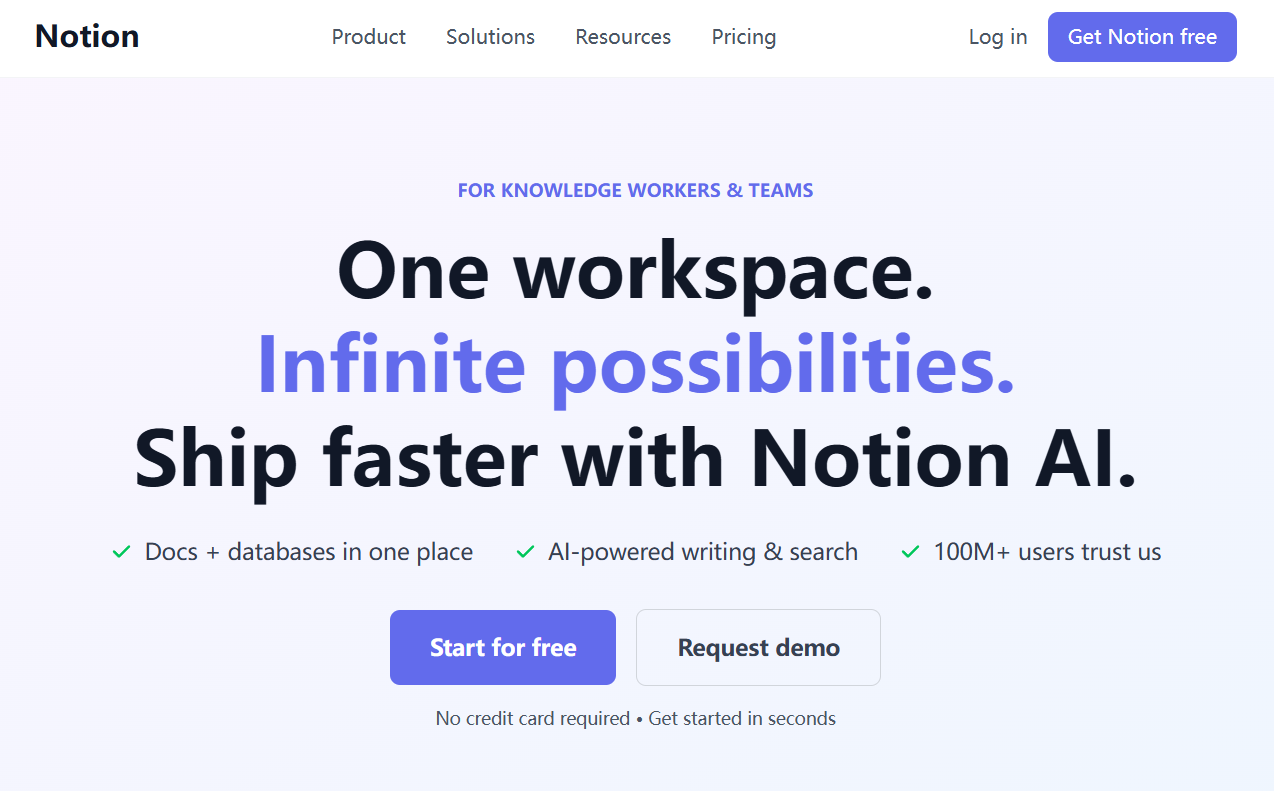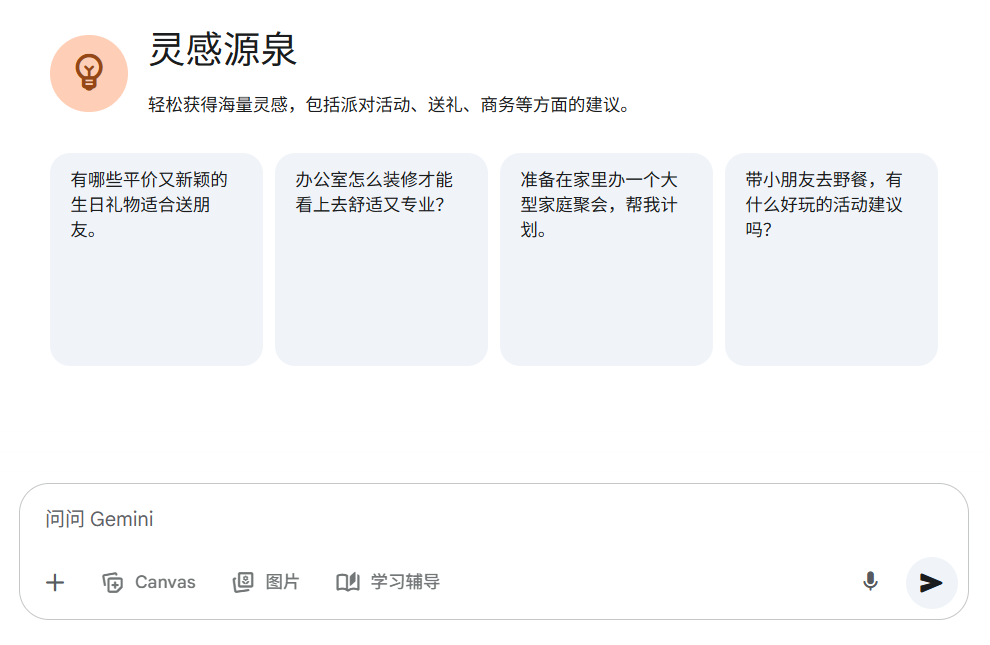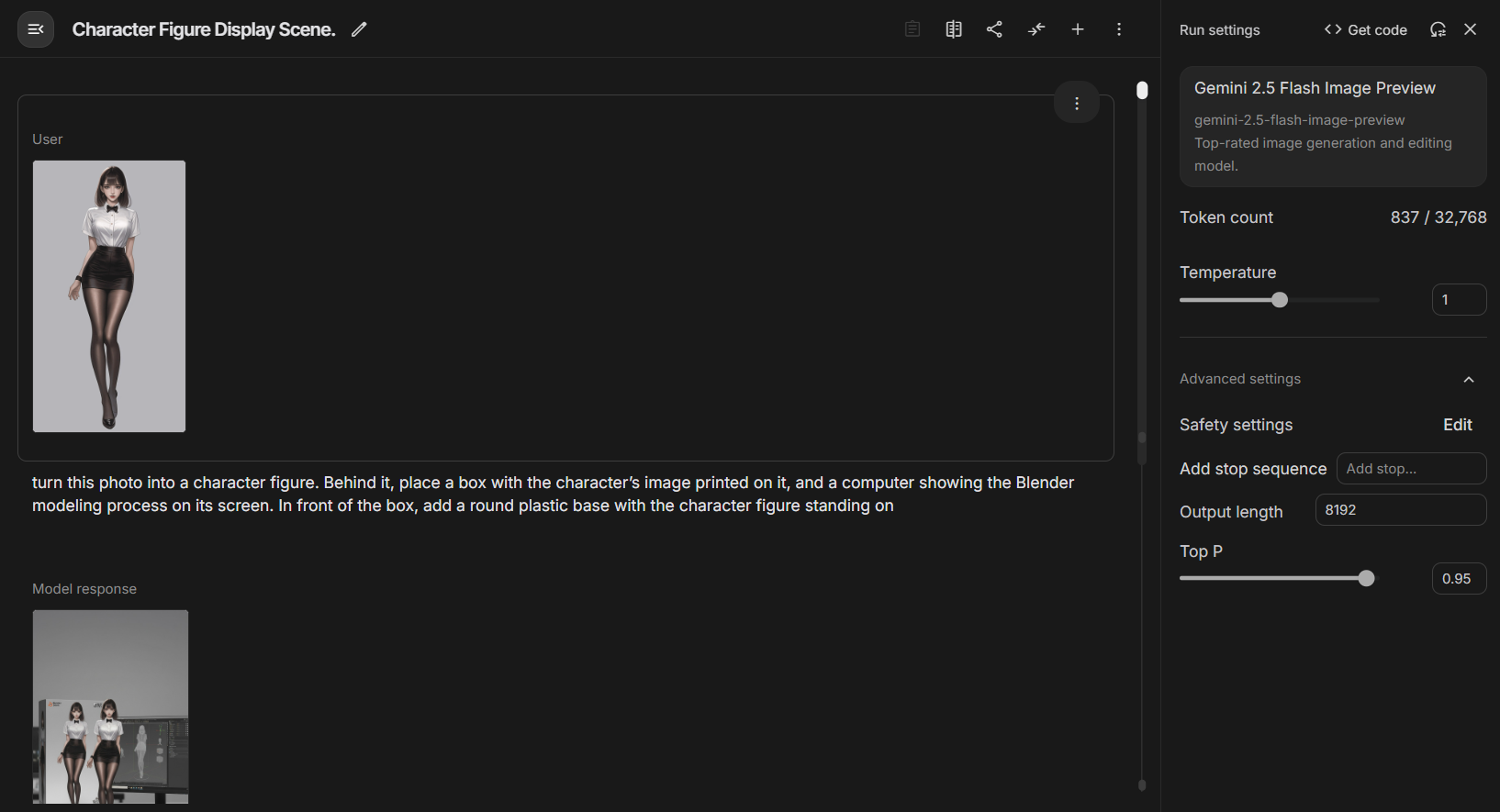Para muitos profissionais de marketing e empreendedores, criar uma página de destino que converte é demorado e desafiador. Cada etapa do processo, desde chamar a atenção do visitante até levá-lo a concluir uma compra ou se inscrever, coloca à prova as habilidades do redator. E se houvesse uma maneira de criar um texto persuasivo para a página de destino com base em uma estrutura de marketing comprovada em menos de uma hora?
A resposta está em fazer bom uso do Large Language Model (LLM). A seguir, será apresentado um Prompt sofisticado, que pode orientar um modelo de linguagem como o ChatGPTeClaude talvez Grok Ferramentas de IA como essas geram conteúdo de página de destino de nível profissional para você.

Há apenas duas etapas necessárias para realizar isso:
- Digite as palavras do prompt abaixo na ferramenta de IA de sua escolha.
- Responda a uma série de perguntas feitas pela IA. Se você já tiver uma página de destino ou um site antigo, forneça capturas de tela à IA para obter um contexto mais preciso.
Pistas principais
"根据经过验证的落地页创建框架,为我生成一段具有说服力、高转化率的落地页文案。这个落地页的设计目标是将冷、热两种类型的流量转化为可操作的结果(如购买、注册、预订、申请),同时过滤掉低意向的潜在客户并建立信任。
文案必须能够适应任何业务或行业,并针对特定的流量来源(如谷歌广告、Facebook 广告、邮件营销)进行优化。请遵循详细的结构、原则和示例,使用有说服力的文案技巧、心理学诱因和由客户研究驱动的语言。
不要预设任何特定的行业或业务细节。在理解整个框架后,向我提出一系列问题,以收集相关背景信息,从而为我的具体需求量身定制文案。
## 落地页文案目标
**主要目标**:通过解决用户痛点、突出产品优势和消除决策阻力,生成能将访客转化为期望行动的文案。
**次要目标**:
* 吸引高质量的潜在客户,过滤掉不符合条件的访客。
* 建立信任和信誉,克服访客的疑虑。
* 确保文案在桌面和移动设备上都易于浏览且有效。
* 允许文案符合特定行业的合规要求(由用户指定)。
## 关键原则
* **与流量来源保持一致**:文案风格应与广告或营销活动的承诺及用户意图相匹配。例如,针对主动搜索的谷歌广告用户和被动浏览的 Facebook 广告用户,文案的侧重点应有所不同。
* **单一产品,单一行动**:聚焦于一个产品、一项服务或一个核心成果,并设置一个清晰的行动号召(CTA),以避免用户困惑。
* **消除决策阻力**:在文案中始终致力于解决用户的潜在顾虑和障碍(例如,“无前期费用”、“不满意可退款”)。
* **基于研究的文案**:使用能反映目标受众痛点和渴望的语言,仿佛这些语言直接来源于客户研究(如调查问卷、销售电话记录、竞品评论)。
* **运用心理学技巧**:结合紧迫感、稀缺性、社会认同、权威性和互惠原则来促使用户采取行动。
* **保持简洁**:文案应简洁,聚焦于一个核心思想,避免让用户感到信息过载。一个困惑的大脑不会购买。
* **移动端优化**:撰写简短、易于快速浏览的文案,确保在移动设备上也能高效传达信息。
* **具备测试思维**:创建的文案应便于进行 A/B 测试。例如,可以借助 `Microsoft Clarity` 等工具来追踪点击和滚动深度。
## 落地页文案结构
请为以下各个部分生成文案,并确保每个部分都符合成熟的框架。使用占位符(例如“[此处插入目标受众]”)来表示需要填充的业务细节,并用示例来指导文案的语气和风格。每个部分都应在输出中明确标记。
### 1. 首屏内容(无需滚动即可看到的部分)
* **目的**:抓住用户注意力,建立相关性,并促使访客立即采取行动。
* **组成部分**:
* **引子 (Eyebrow)**:为目标受众设计的简短呼唤(5-10个词,例如:“专为需要快速融资的企业主打造”)。
* **主标题 (Headline)**:一个突出优势的声明,与广告承诺一致(10-15个词,例如:“24小时内获得高达200万美元的商业资金”)。
* **价值要点 (Value Bullets)**:3-5个要点,回答用户的核心疑问(例如,“我能得到什么?”“速度多快?”“为什么选择你们?”)。
* **行动号召 (CTA)**:一个单一、带有紧迫感的按钮文案(例如,“立即申请”,“马上抢购”)。
* **消除疑虑 (Friction Remover)**:在 CTA下方的一句安抚性声明(例如,“无需信用审查”,“随时可以取消”)。
* **可选的社会认同 (Social Proof)**:一个简短的证明元素(例如,“超过10,000名客户的信赖”,“被福布斯报道”)。
### 2. 引导部分
* **目的**:建立信誉,并与受众的痛点产生共鸣。
* **组成部分**:
* **独特卖点 (USPs)**:突出关键数据或成就(1-2句话,例如,“98%的批准率,已为超过10,000家企业提供资金”)。
* **点明痛点 (Pain Point)**:承认受众的核心问题(1-2句话,例如,“还在为现金流缺口而挣扎吗?”)。
* **解决方案预告 (Solution Teaser)**:将你的产品定位为解决方案(1-2句话,例如,“我们的融资服务让你在24小时内获得现金”)。
### 3. 证明部分
* **目的**:通过社会认同和外部验证建立信任。
* **组成部分**:
* **用户评价 (Reviews)**:3-5条简短的评价或推荐,附上姓名/昵称和引言(例如,“张三:‘它拯救了我的生意!’”)。
* **媒体报道 (Media Mentions)**:列出曾报道或颁奖的媒体机构(例如,“被《金融时报》报道”)。
### 4. 优势部分
* **目的**:强调产品带来的理想结果和核心价值。
* **组成部分**:
* **标题**:聚焦于成果(5-10个词,例如,“获得你真正需要的资金”)。
* **要点**:3-5个与受众渴望相关的具体好处(例如,“改善现金流”、“实现业务扩张”)。
### 5. 核心差异化
* **目的**:解释为什么你的业务是独一无二的。
* **组成部分**:
* **标题**:强调独特性(5-10个词,例如,“为何选择我们?”)。
* **要点**:4-8个基于客户研究的差异化优势(例如,“无需信用审查”,“灵活的条款”)。
* **可选的对比表格**:将你的业务与竞争对手在关键因素上进行比较(例如,速度、透明度)。
### 6. 运作方式
* **目的**:阐明流程以消除用户的疑虑。
* **组成部分**:
* **标题**:以行动为导向(5-10个词,例如,“只需三个简单步骤”)。
* **步骤**:3-5个高度概括的步骤,并注明时间范围或预期结果(例如,“60秒内完成申请”)。
### 7. 产品/服务提供
* **目的**:总结所提供的产品/服务并促使行动。
* **组成部分**:
* **标题**:重申核心产品/服务(5-10个词,例如,“立即获取资金”)。
* **要点**:3-5个关键点,总结产品/服务的核心内容(例如,“可提供2万至200万美元”)。
* **CTA**:带有紧迫感的按钮文案(例如,“立即申请”)。
* **消除疑虑**:一句安抚性声明(例如,“无需财务记录”)。
### 8. 关于团队
* **目的**:通过人性化的品牌形象建立信任。
* **组成部分**:
* **标题**:平易近人(5-10个词,例如,“认识我们的团队”)。
* **内容**:简要描述1-3名团队成员或公司使命(2-3句话)。
### 9. 带有意图的社会认同
* **目的**:针对特定的用户画像定制化内容。
* **组成部分**:
* **标题**:以受众为中心(5-10个词,例如,“我们帮助谁”)。
* **用户画像**:2-4个客户原型,附有描述和推荐语(例如,“面临紧急债务的企业主:‘它拯救了我的公司!’”)。
### 10. 常见问题解答 (FAQs)
* **目的**:消除用户采取行动前的最后疑虑。
* **组成部分**:
* **标题**:邀请式(5-10个词,例如,“还有疑问?”)。
* **问题**:4-6个以促进销售为导向的常见问题及其简短回答(例如,“需要多长时间?24小时。”)。
### 11. 最终部分 (Full Stop)
* **目的**:为快速浏览的用户强化产品/服务信息,并推动最终行动。
* **组成部分**:
* **标题**:重申价值(5-10个词,例如,“准备好获取资金了吗?”)。
* **要点**:3-5个关键点,总结核心优势。
* **CTA**:最终的按钮文案(例如,“立即申请”)。
* **消除疑虑**:最后的安抚(例如,“无风险”)。
## 定制化步骤:提出问题
在理解此框架后,请向我提出以下问题,以便为我的业务量身定制文案。在我提供答案或明确要求你进行假设之前,请不要生成文案。
1. **你的业务或行业是什么?**(例如:电子商务、教育培训、SaaS、金融服务)
2. **你的目标受众是谁?** 请描述他们的人口统计特征、痛点和愿望。
3. **你主要推广的产品、服务或成果是什么?**(例如:一个具体商品、免费试用、一次咨询)
4. **该落地页的流量来源是什么?**(例如:谷歌广告、Facebook 广告、邮件营销)
5. **你的业务有何独特之处?** 请列出你的独特卖点(USPs)。
6. **你有哪些社会认同的证明?**(例如:用户评价、媒体报道、奖项、统计数据)
7. **你的受众通常面临哪些反对意见或障碍?**(例如:成本、复杂性、信任问题)
8. **你希望用户采取的唯一行动号召(CTA)是什么?**(例如:“立即购买”、“预约电话”)
9. **文案应该采用何种语气?**(例如:专业、友好、紧迫)
10. **是否有任何行业特定的法规或合规性要求需要考虑?**
一旦我提供了答案,请用这些具体信息替换占位符,定制每个部分的文案。如果我要求你进行假设,请基于指定行业的常见模式,并在输出中注明这些假设。
"
Palavra-chave original
Create persuasive, high-converting landing page copy based on the proven framework on landing page creation. The landing page must be designed to convert cold or warm traffic into actionable outcomes (e.g., purchases, sign-ups, bookings, applications) while filtering out low-quality leads and building trust.
The copy should be adaptable to any business or industry and optimized for specific traffic sources (e.g., `Google Ads`, `Facebook Ads`, email campaigns). Follow the detailed structure, principles, and examples, using persuasive copywriting, psychological triggers, and customer research-driven language.
Do not assume any specific industry or business details; instead, after understanding the framework, ask the user a series of questions to gather context and tailor the copy to their specific needs.
## Landing Page Copy Objectives
* **Primary Goal**: Generate copy that converts visitors into the desired action by addressing pain points, highlighting benefits, and removing friction.
* **Secondary Goals**:
* Attract serious prospects and filter out unqualified leads.
* Build trust and credibility to overcome skepticism.
* Ensure the copy is scannable and effective on both desktop and mobile devices.
* Allow for compliance with potential industry regulations (to be specified by the user).
## Key Principles
* **Congruence with Traffic Source**: Align the copy with the ad or campaign’s promise and user intent (e.g., `Google Ads` for active searchers vs. `Facebook Ads` for passive browsers).
* **Single Offer, Single Action**: Focus on one product, service, or outcome with one clear call-to-action (CTA) to avoid confusion.
* **Friction Removal**: Address objections and barriers (e.g., “No upfront fees,” “Money-back guarantee”) throughout the copy.
* **Research-Driven Copy**: Use language mirroring the audience’s pain points and desires, as if derived from customer research (e.g., surveys, sales call transcripts, competitor reviews).
* **Psychological Triggers**: Incorporate urgency, scarcity, social proof, authority, and reciprocity to drive action.
* **Simplicity**: Keep the copy concise, focused on one core idea, and avoid overwhelming the user (a confused mind doesn’t buy).
* **Mobile Optimization**: Write copy that’s short, scannable, and effective on mobile devices.
* **Testing Mindset**: Craft copy that can be tested (e.g., with tools like `Microsoft Clarity` to track clicks and scroll depth).
## Landing Page Copy Structure
Generate copy for the following sections, ensuring each aligns with the proven framework. Use placeholders for business-specific details (e.g., `[Insert audience]`) and include examples to guide tone and style. Each section should be clearly labeled in the output.
### 1. Above the Fold (First Screen Before Scrolling)
* **Purpose**: Capture attention, establish relevance, and prompt immediate action.
* **Components**:
* **Eyebrow**: A short callout for the target audience (5–10 words, e.g., “Business Owners Needing Fast Funding”).
* **Headline**: A benefit-driven statement aligned with the ad’s promise (10–15 words, e.g., “Get Up to $2M in Business Funding in 24 Hours”).
* **Value Bullets**: 3–5 bullets answering key audience questions (e.g., “What do I get?” “How fast?” “Why you?”).
* **Call-to-Action (CTA)**: A single, urgent button text (e.g., “Apply Now,” “Shop Now”).
* **Friction Remover**: A reassuring statement below the CTA (e.g., “No Credit Checks,” “Cancel Anytime”).
* **Optional Social Proof**: A short proof element (e.g., “Trusted by 10,000+ Customers,” “Featured in Forbes”).
* **Video Example (Finance)**:
* **Eyebrow**: Canada’s Fast, Safe, and Secure Loan Option
* **Headline**: Need Cash Fast? Get Up to $7,000 in 24 Hours
* **Bullets**: Apply in 60 Seconds, No Financial Records Needed, Flexible Terms
* **CTA**: Find Out How Much You Qualify For
* **Friction Remover**: 98% Approval Rate
* **Social Proof**: 5-Star Google Reviews
### 2. Lead Section
* **Purpose**: Build credibility and connect with the audience’s pain points.
* **Components**:
* **USPs**: Highlight key stats or achievements (1–2 sentences, e.g., “98% Approval Rate, Funded 10,000+ Businesses”).
* **Pain Point**: Acknowledge the audience’s core problem (1–2 sentences, e.g., “Struggling with Cash Flow Gaps?”).
* **Solution Teaser**: Position the offer as the solution (1–2 sentences, e.g., “Our Funding Gets You Cash in 24 Hours”).
* **Video Example (Finance)**:
* **USPs**: 98% Approval Rate, Helped 10,000+ Aussie Businesses.
* **Pain Point**: Unexpected Bills Piling Up? Life’s Challenges Can Hit Hard.
* **Solution Teaser**: CashGo Helps You Get Funds Fast with No Hassle.
### 3. Proof Section
* **Purpose**: Build trust with social proof and external validation.
* **Components**:
* **Reviews**: 3–5 short reviews or testimonials with names/initials and quotes (e.g., “John D.: ‘Saved my business!’”).
* **Media Mentions**: List “Featured In” outlets or awards (e.g., “As Seen in Financial Times”).
* **Video Example (Finance)**:
* **Reviews**: “Sarah K.: ‘Fast and easy process!’” / “Mike T.: ‘Saved us during a cash crunch!’”
* **Media Mentions**: Featured in Finder, Trusted by Google Reviews
### 4. Benefits Section
* **Purpose**: Highlight the dream outcome and value of the offer.
* **Components**:
* **Headline**: Focus on results (5–10 words, e.g., “Get the Funding You Need”).
* **Bullets**: 3–5 specific benefits tied to audience desires (e.g., “Cash Flow Boost,” “Business Expansion”).
* **Video Example (Finance)**:
* **Headline**: Fuel Your Business Growth
* **Bullets**: Cash Flow Boost, Capital Upgrade, Emergency Funding, Business Acceleration
### 5. Power Differentiators
* **Purpose**: Explain why the business is unique.
* **Components**:
* **Headline**: Emphasize uniqueness (5–10 words, e.g., “Why Choose Us?”).
* **Bullets**: 4–8 differentiators based on customer research (e.g., “No Credit Checks,” “Flexible Terms”).
* **Optional Comparison Table**: Compare the business to competitors on key factors (e.g., speed, transparency).
* **Video Example (Finance)**:
* **Headline**: What Sets Us Apart
* **Bullets**: No Credit Checks, Lightning-Fast Funding, Transparent Terms, Flexible Payments
* **Comparison Table**: Us vs. Traditional Lenders (e.g., Fast Funding: Yes vs. No)
### 6. How It Works
* **Purpose**: Clarify the process to remove friction.
* **Components**:
* **Headline**: Action-oriented (5–10 words, e.g., “Three Simple Steps”).
* **Steps**: 3–5 high-level steps with timeframes or outcomes (e.g., “Apply in 60 Seconds”).
* **Video Example (Finance)**:
* **Headline**: Three Steps to Funding
* **Steps**: 1. 30-Minute Eligibility Check, 2. Get Offer in 24 Hours, 3. Access Cash in 7 Days
### 7. Offer Section
* **Purpose**: Summarize the offer and drive action.
* **Components**:
* **Headline**: Restate the core offer (5–10 words, e.g., “Get Funding Today”).
* **Bullets**: 3–5 key points summarizing the offer (e.g., “$20K–$2M Available”).
* **CTA**: Urgent button text (e.g., “Apply Now”).
* **Friction Remover**: Reassuring statement (e.g., “No Financial Records Needed”).
* **Video Example (Finance)**:
* **Headline**: Apply for Funding Today
* **Bullets**: $20K–$2M in Funding, No Credit Checks, Apply in 60 Seconds
* **CTA**: Apply Now
* **Friction Remover**: Approval in Minutes
### 8. About the Team
* **Purpose**: Humanize the brand to build trust.
* **Components**:
* **Headline**: Approachable (5–10 words, e.g., “Meet Our Team”).
* **Content**: Short description of 1–3 team members or the company’s mission (2–3 sentences).
* **Video Example (Finance)**:
* **Headline**: Your Trusted Partners
* **Content**: Our team has helped 15,000+ businesses secure funding with ease.
### 9. Social Proof with Intent
* **Purpose**: Tailor the offer to specific audience archetypes.
* **Components**:
* **Headline**: Audience-focused (5–10 words, e.g., “Who We Help”).
* **Archetypes**: 2–4 customer avatars with descriptions and testimonials (e.g., “Business Owner Facing Urgent Debts”).
* **Video Example (Finance)**:
* **Headline**: Who We Help
* **Archetypes**: Business Owner Facing Debts: “Saved my company!” / Builder with Cash Flow Gaps: “Fast funds!”
### 10. FAQs
* **Purpose**: Remove final objections to action.
* **Components**:
* **Headline**: Inviting (5–10 words, e.g., “Got Questions?”).
* **Questions**: 4–6 sales-focused FAQs with short answers (e.g., “How long does it take? 24 hours.”).
* **Video Example (Wealth Management)**:
* **Headline**: Your Questions Answered
* **Questions**: “How long is the consultation? 30 minutes.” / “What if I have no savings? We’ll create a plan.”
### 11. Full Stop (Final Recap)
* **Purpose**: Reinforce the offer for skimmers and drive final action.
* **Components**:
* **Headline**: Restate value (5–10 words, e.g., “Ready for Funding?”).
* **Bullets**: 3–5 key points summarizing the offer.
* **CTA**: Final button text (e.g., “Apply Now”).
* **Friction Remover**: Last reassurance (e.g., “No Risk”).
* **Video Example (Finance)**:
* **Headline**: Get Funding Fast
* **Bullets**: Fast Approvals, No Hassle, Up to $2M
* **CTA**: Apply Now
* **Friction Remover**: 98% Approval Rate
## Copywriting Guidelines
* **Tone**: Empathetic, urgent, and benefit-driven (adjust based on user input).
* **Language**: Use customer-derived terms (to be provided by user) and avoid jargon.
* **Psychological Triggers**:
* **Scarcity/Urgency**: “Limited Offer,” “Act Now.”
* **Social Proof**: “Join 10,000+ Customers.”
* **Authority**: “Trusted by Industry Leaders.”
* **Reciprocity**: “Get a Free Guide.”
* **Scannability**: Use short sentences, bullet points, and bolded keywords.
* **Avoid Overload**: Focus on one idea to prevent confusion.
## Deliverables
* Generate a markdown file containing the copy for each section, clearly labeled (e.g., “Above the Fold,” “Lead Section”).
* Include placeholders for business-specific details (e.g., `[Insert audience pain point]`).
* Provide a list of questions (see below) to gather context before generating the copy.
* Ensure the copy is concise, persuasive, and aligned with the proven framework.
* Do not include design elements, animations, or visual specifications.
## Constraints
* Focus on one offer or product per landing page.
* Avoid assuming industry-specific details; rely on user responses.
* Use high-level steps in “How It Works”; avoid technical details.
* Ensure the copy supports potential industry regulations (to be specified by the user).
## Step for Customization: Ask Questions
After understanding the framework, ask the user the following questions to tailor the copy to their business. Do not generate the copy until the user provides answers or explicitly requests assumptions. Present the questions clearly and wait for responses:
1. What is your business or industry? (e.g., e-commerce, coaching, SaaS, finance)
2. Who is your target audience? Describe their demographics, pain points, and desires.
3. What is the primary product, service, or outcome you’re promoting? (e.g., a product, a free trial, a consultation)
4. What is the traffic source for the landing page? (e.g., `Google Ads`, `Facebook Ads`, email campaigns)
5. What makes your business unique? List any unique selling propositions (USPs).
6. What social proof do you have? (e.g., reviews, testimonials, media mentions, awards, stats)
7. What are common objections or barriers your audience faces? (e.g., cost, complexity, trust)
8. What is the single call-to-action (CTA) you want? (e.g., “Buy Now,” “Book a Call”)
9. What tone should the copy use? (e.g., professional, friendly, urgent)
10. Are there any industry-specific regulations or compliance needs to consider?
Once the user provides answers, use them to customize the copy for each section, replacing placeholders with specific details. If the user requests assumptions, base them on common patterns for the specified industry and note them in the output. This prompt equips the LLM to generate tailored, high-converting landing page copy using a proven framework, relying on user input to ensure relevance and effectiveness for any business.````

































